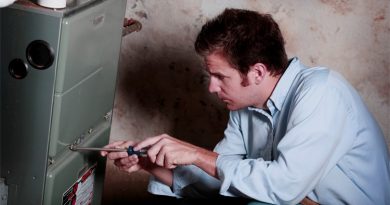Spring Cleaning For The Medicine Cabinet.
The medicine cabinet is a kind of catch-all in the home. Somewhere behind last month’s anti-nausea medication and the box of bandages is medication that may be years old. Anytime we try to add new things to the cabinet, we risk a messy collapse of our accumulated amber bottles of pills. Yet we hang on to all that stuff, clinging to the notion that it’s some sort of special treasure because it required a prescription.
The reality is that these old drugs are more than just a nuisance that interferes with our storage space. They are a real risk to our health and safety. When we get into spring cleaning, the medicine cabinet should be a focal point, getting a thorough review of its contents and an aggressive culling of things that no longer belong.
Let’s review some of the things that can go wrong if we don’t get the medicine cabinet cleaned up from time to time.
Medication Mistakes
The label is a very important piece of information. Not only does it identify the medication, it also provides an expiration date. Being without either of these two facts can be very dangerous. And while we should ideally keep all medication in its original container, we often don’t. When we are planning a 3-day trip and our new 90-day refill of medication just came, we’re going to load a few pills into a sandwich bag and leave the rest at home so that we don’t risk losing or spilling a bunch of pills.
Anything you can’t identify shouldn’t be taken, but that doesn’t mean you have to waste those mystery meds. A good source for pill ID can answer your questions and help you get things back in the original container. Of course, once you identify them, you should make sure the date is still okay.
Supplying Abuse
One of the most common sources of prescription drugs abused by young people is their home, or the home of relatives. It’s sad to say, but when they know someone in the family is on strong painkillers for an injury or illness, the temptation to abuse can easily develop. That’s especially true when the child’s friends find out about the availability of narcotics.
Because they are so good at relieving pain, narcotics are often kept even after the condition that necessitated them has subsided. People are especially tempted to hang on to them if their condition could recur, such as kidney stones or back spasms. But because their presence can not only tempt visitors but also encourage thieves, they should be properly disposed of as soon as the condition subsides. If it comes back, get a refill, but don’t stockpile pain meds.
The Opportunity To Misuse
In a technical sense, drug abuse is any utilization of a medication for a purpose or person for which it was not intended. Many people are tempted to hang on to unused antibiotics or decongestants in case they need them again later; they want to avoid getting caught on a weekend or holiday with no way to get a new prescription, so they hang on to them.
This is a mistake. Yes, chances are you’ll receive exactly the same drug for the same old condition if it flares up again, but leave that up to the doctor. Self-prescribing can lead to interaction problems, allergic reactions, and even antibiotic resistance. If you feel better, throw away the remaining medication. Or better yet, complete the full course of the prescription so that you don’t have any left.
Medication is expensive and hard to get. That makes it difficult to part with; we hate the thought of a return visit to the doctor and the resulting copays. But accumulating old medications can cause so many problems that those costs are still worth it. Give your medication a thorough review. Throw out the unneeded, unidentified, expired, and dangerous products, and be willing to seek professional refills instead of doing them at home.




